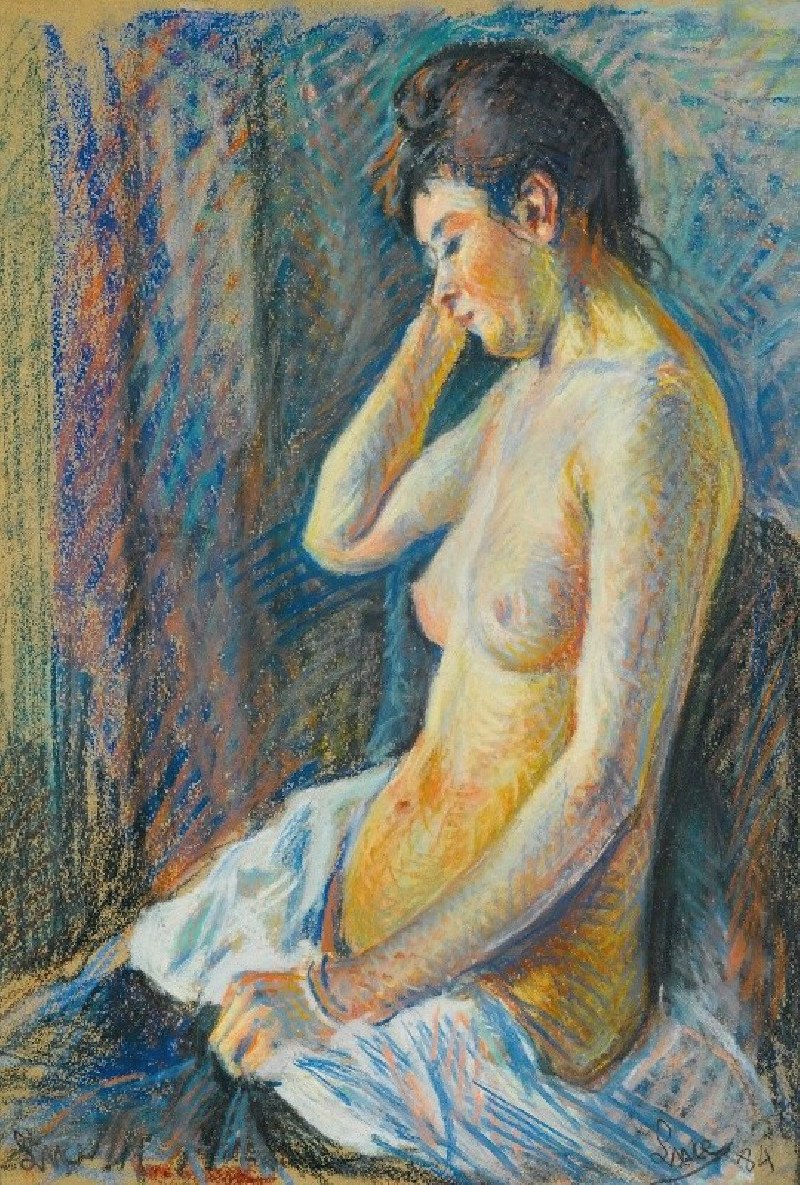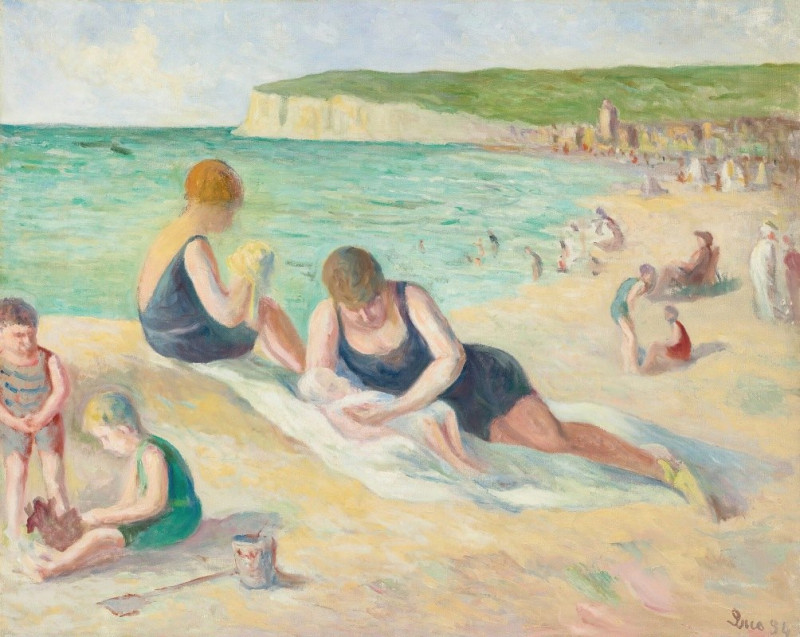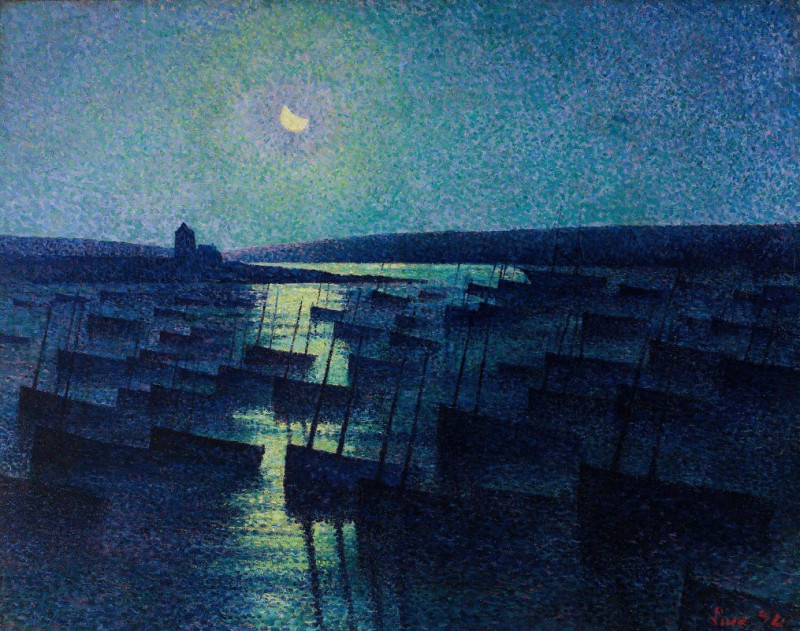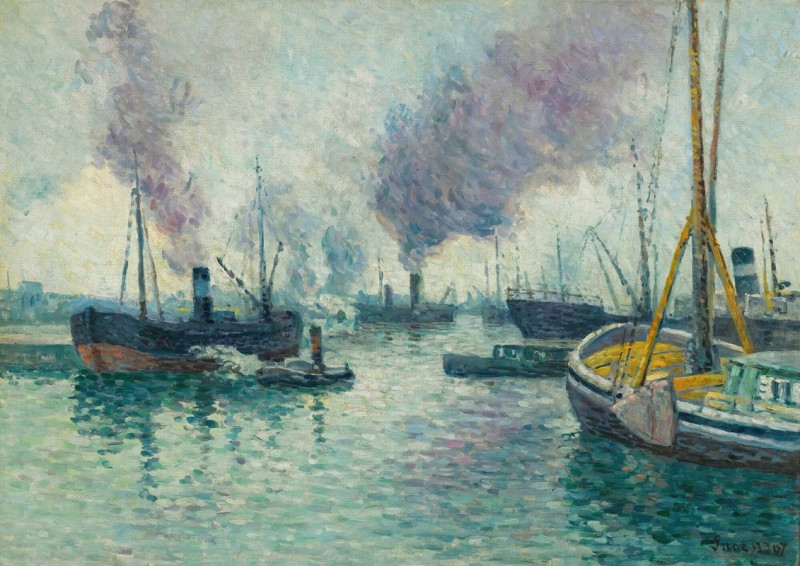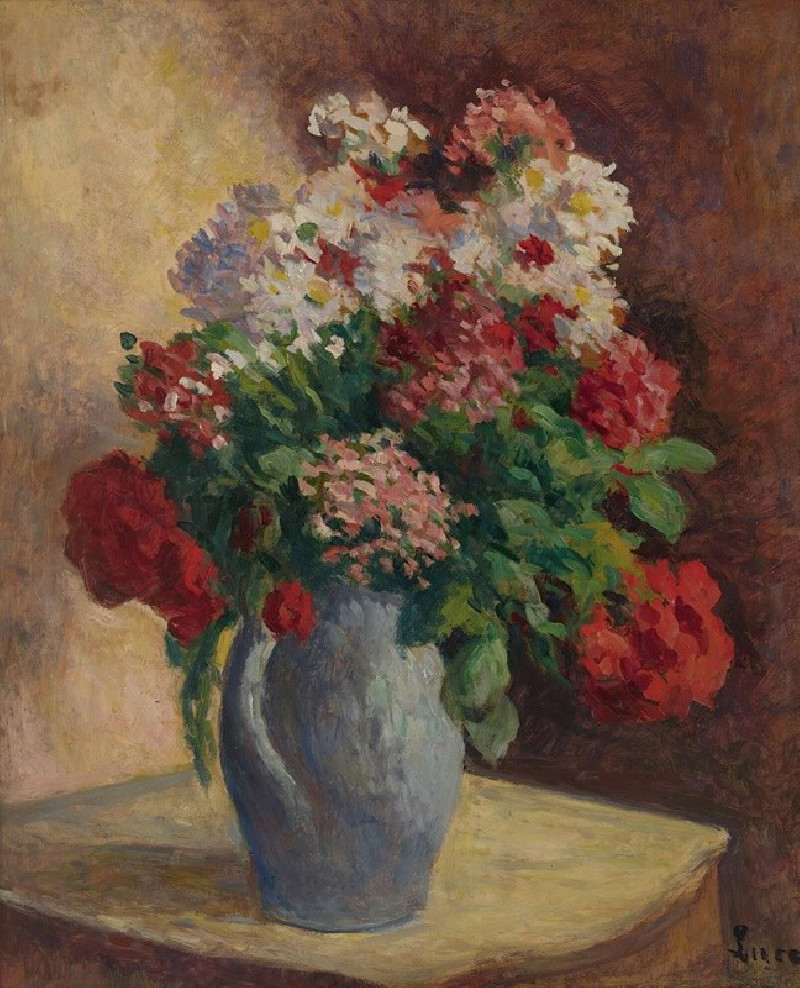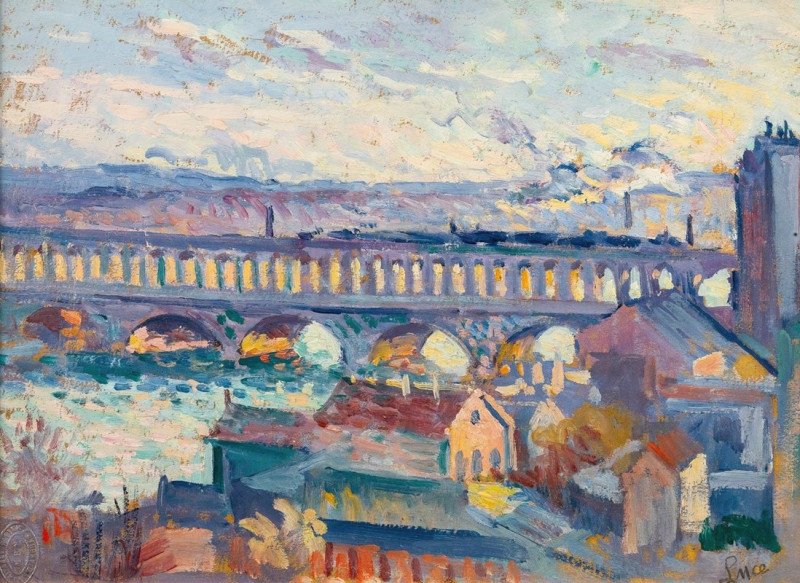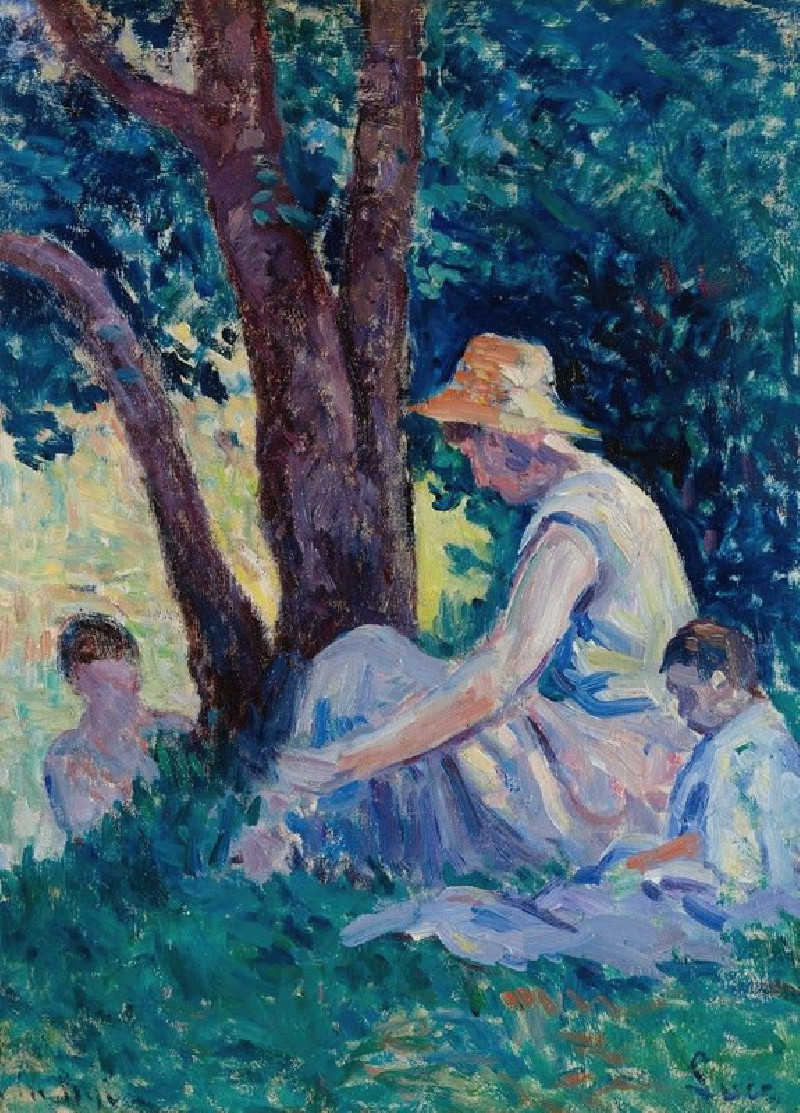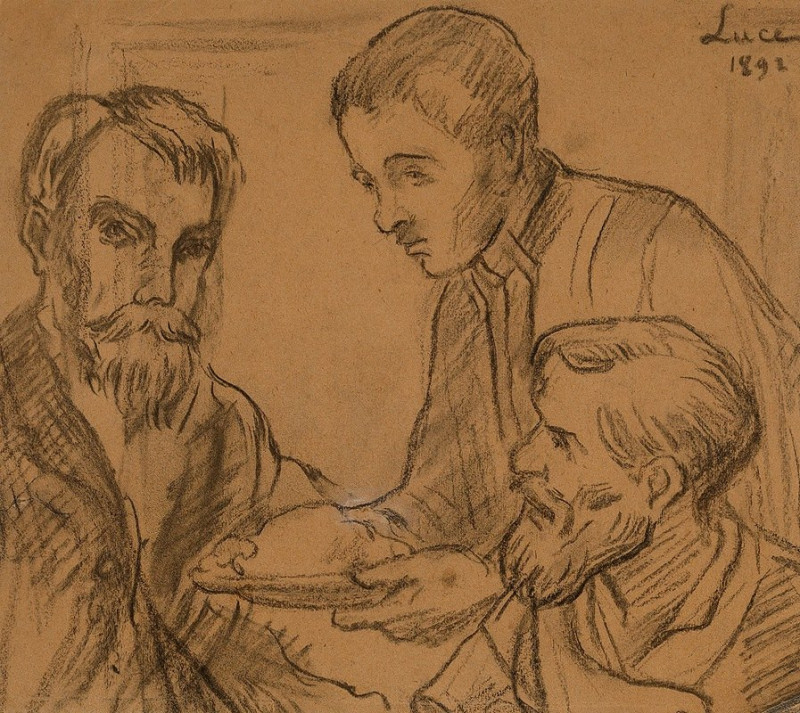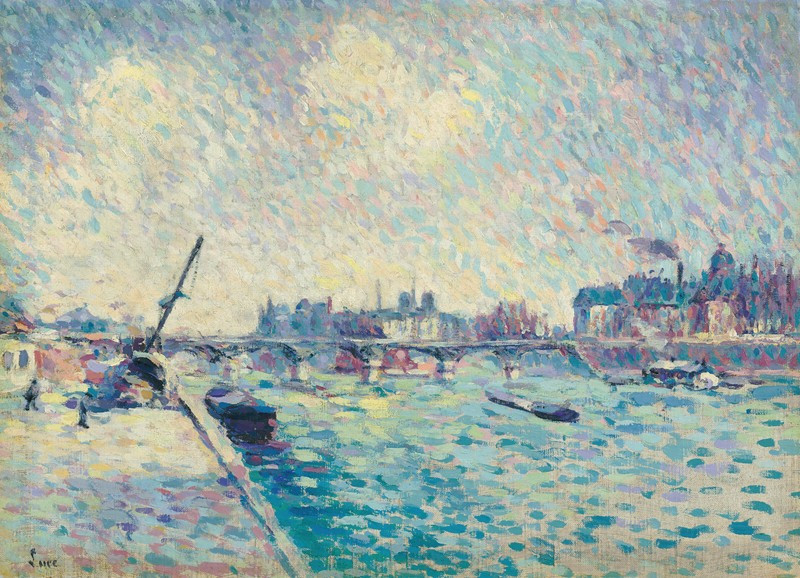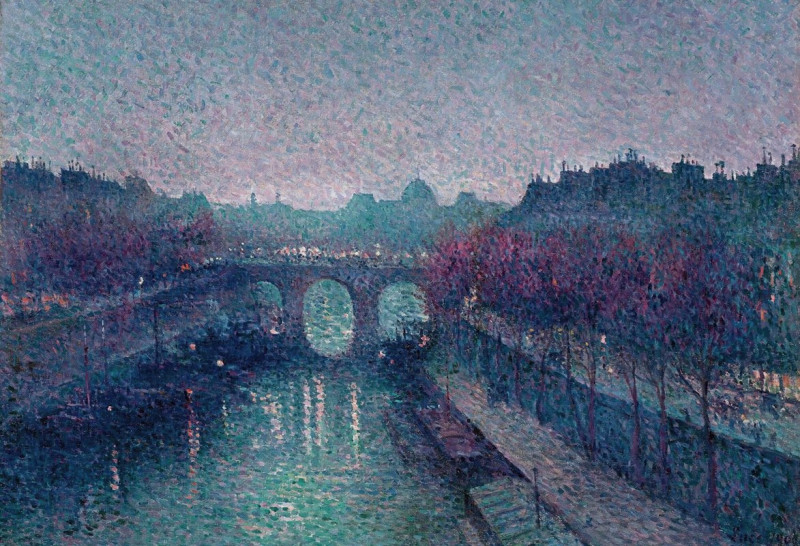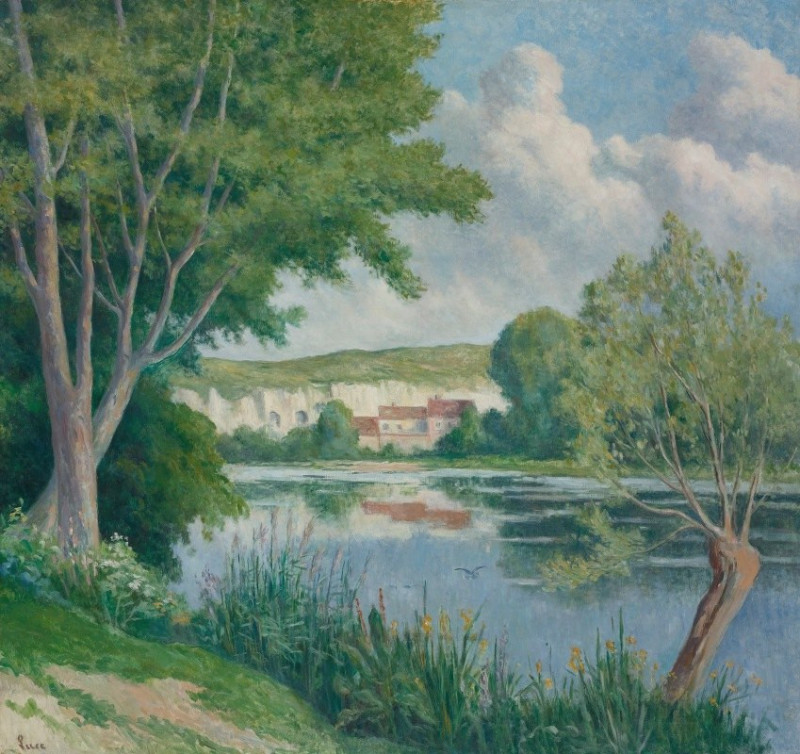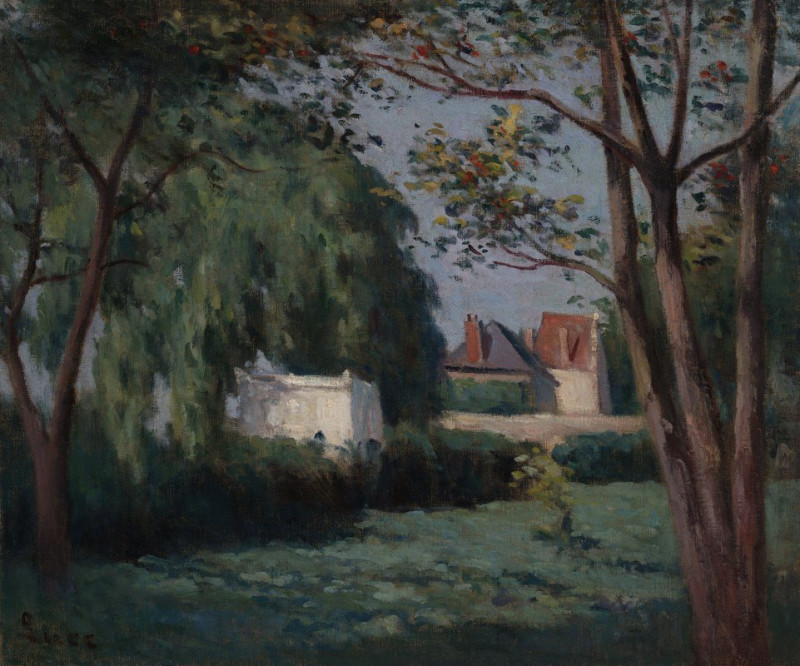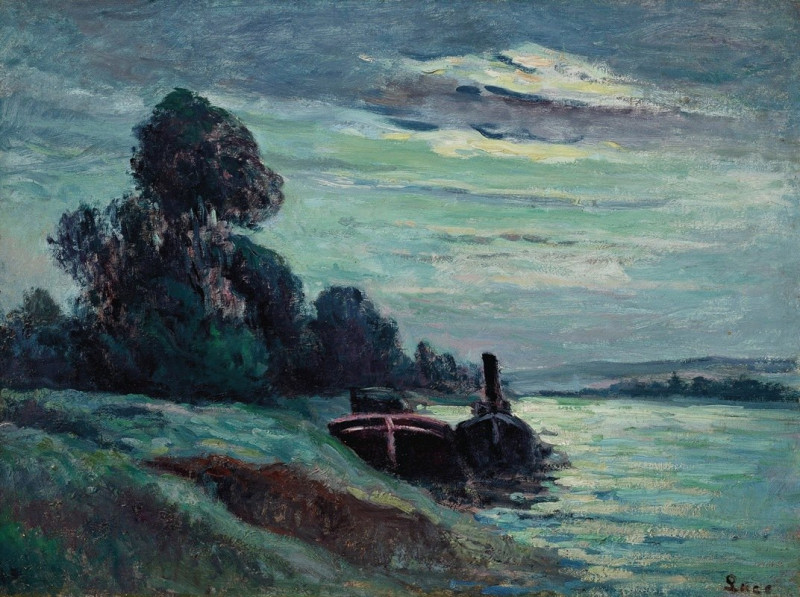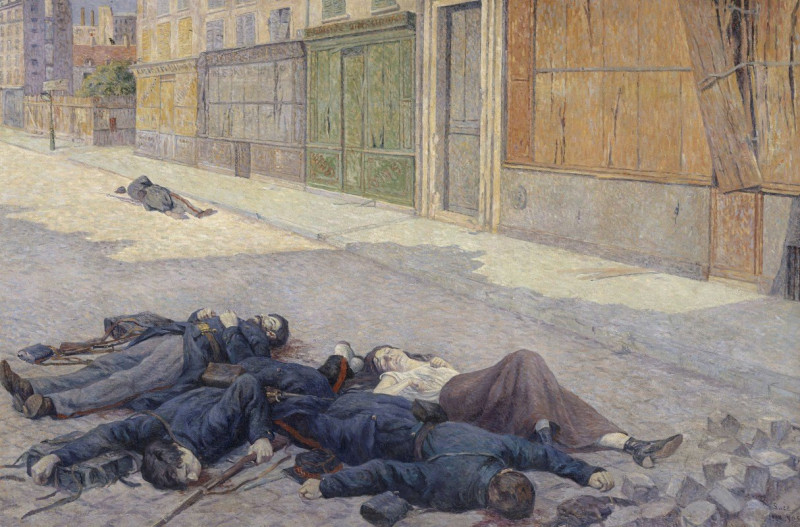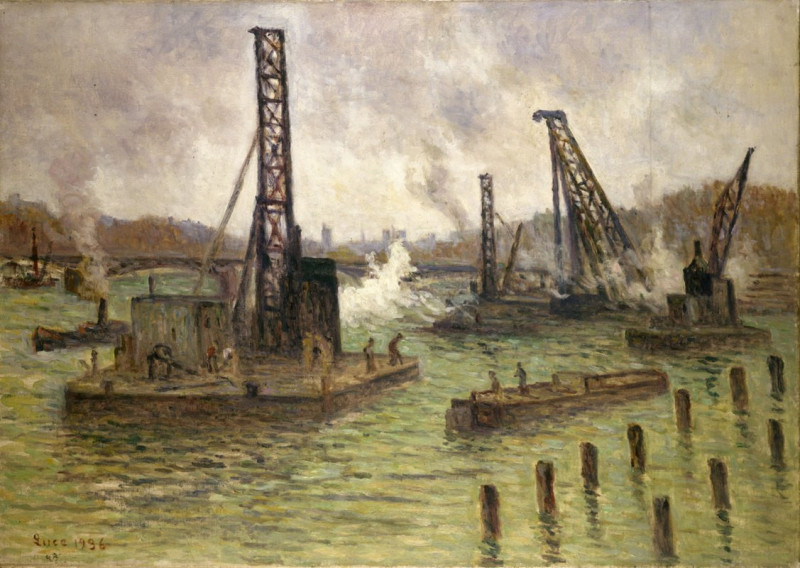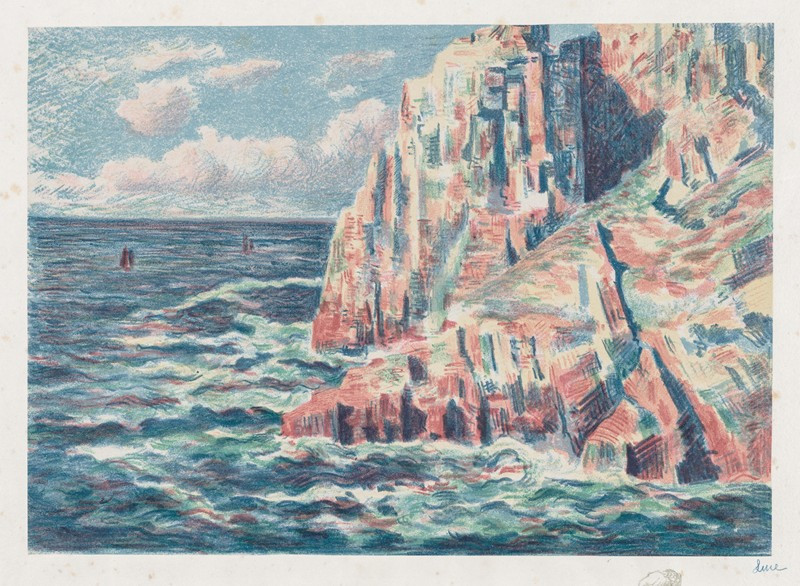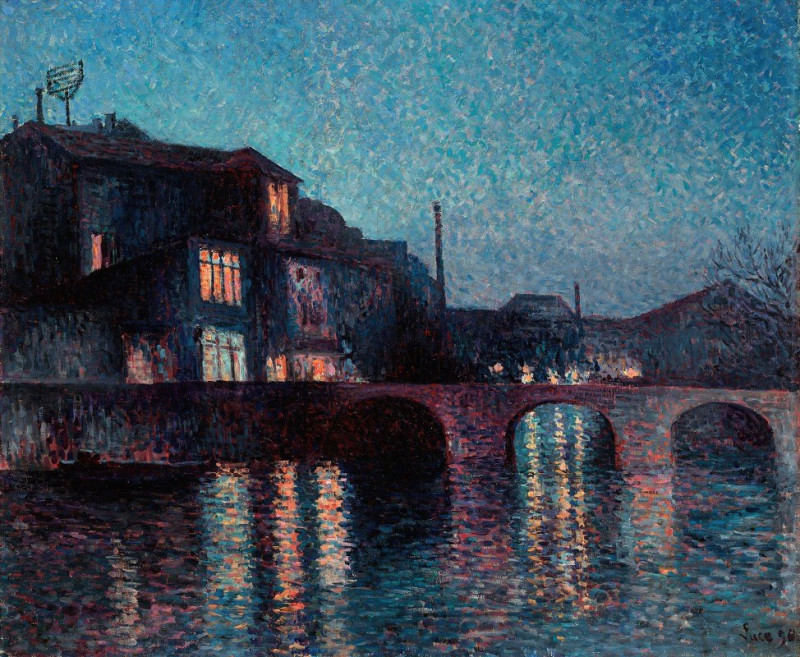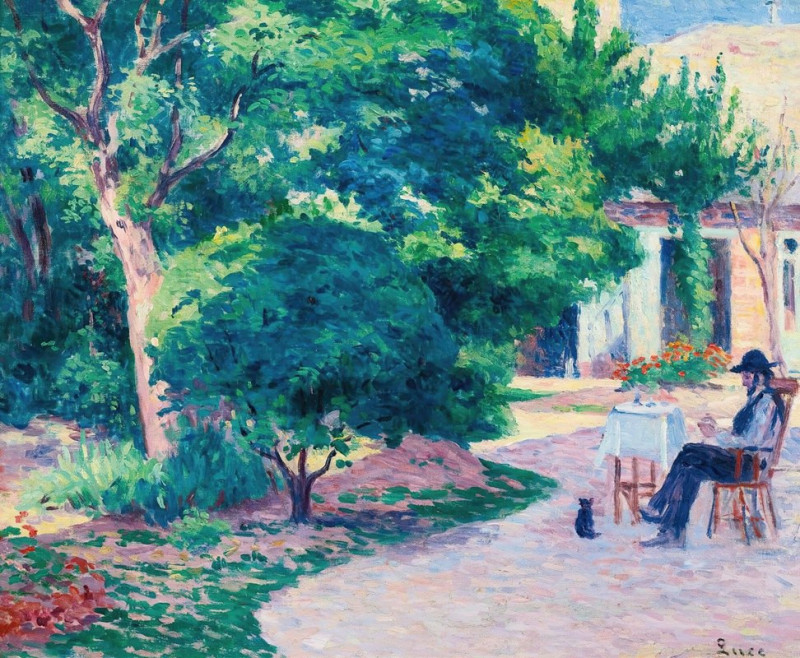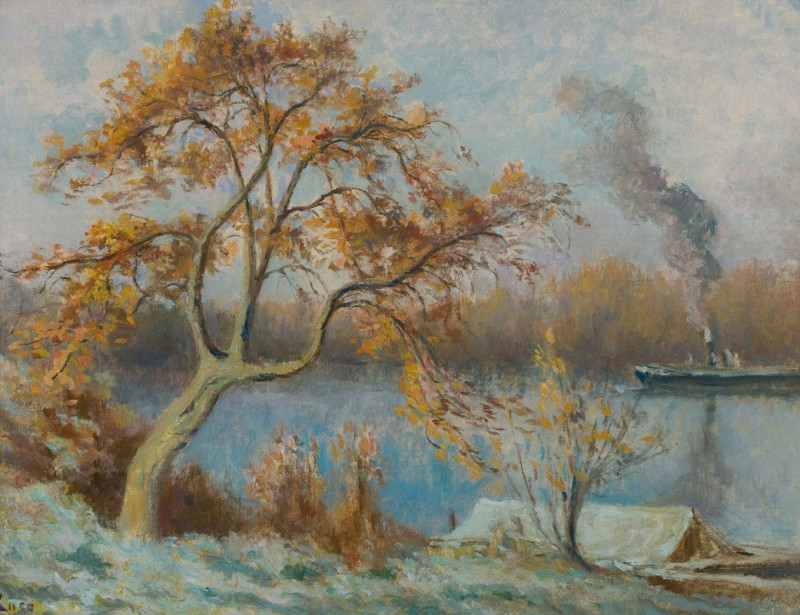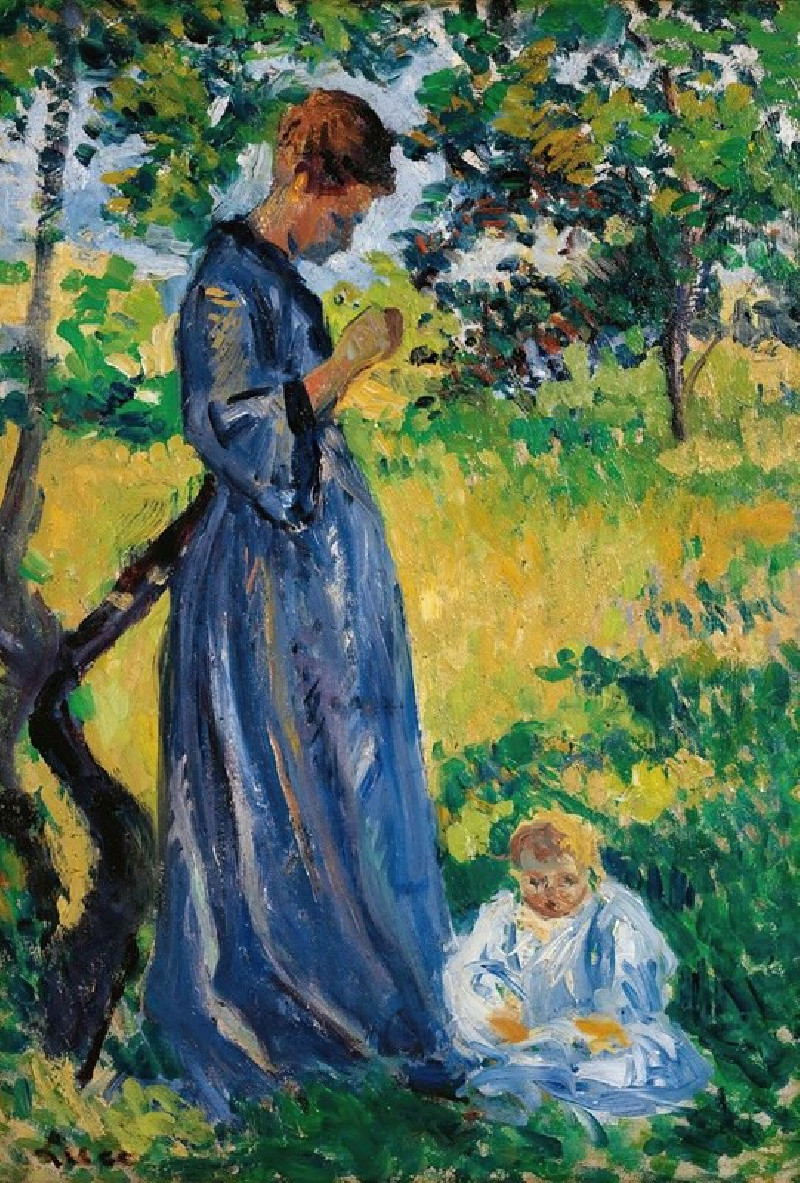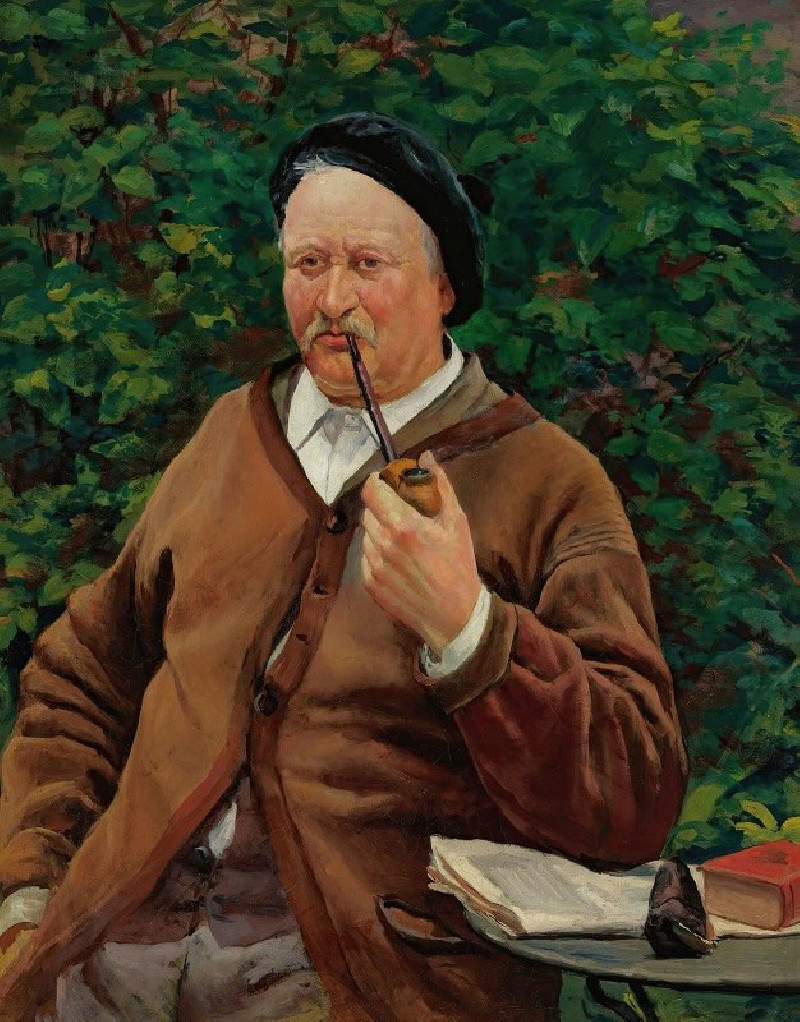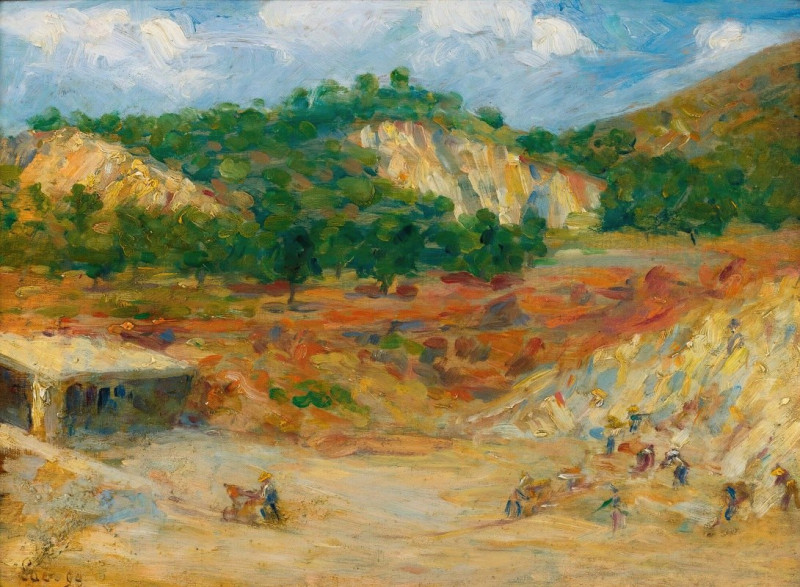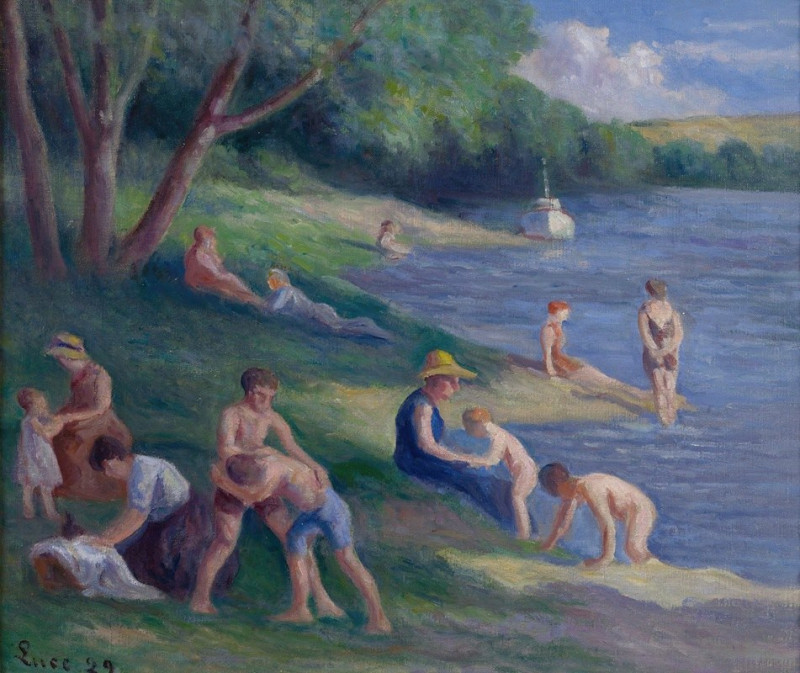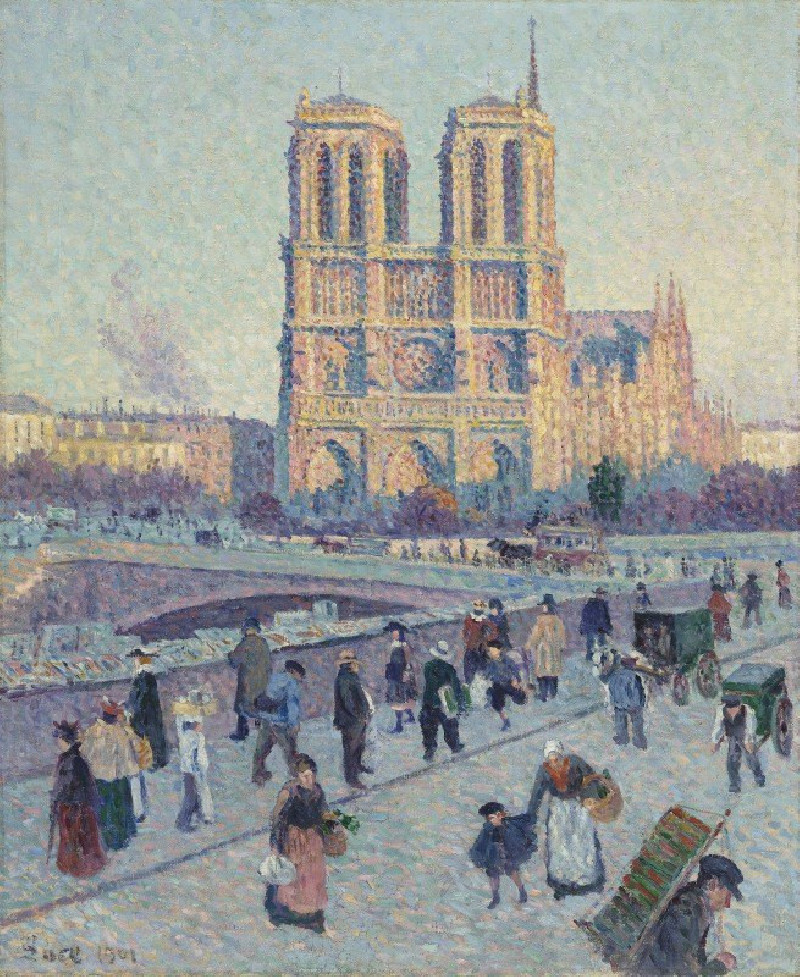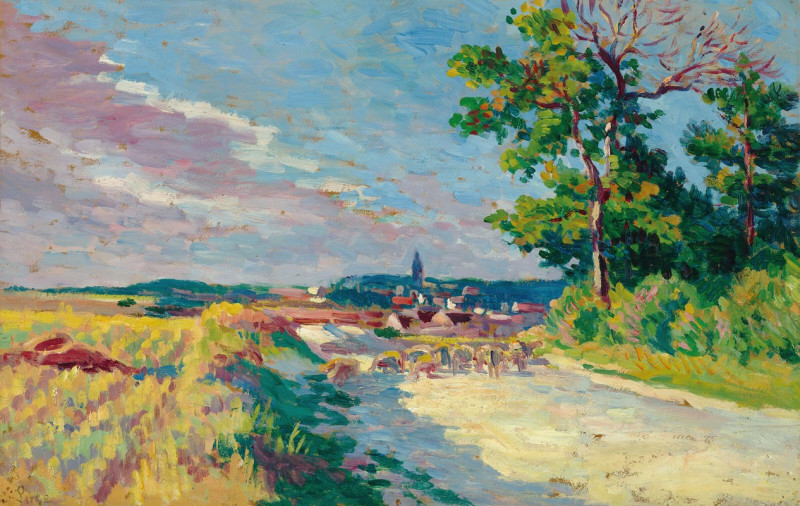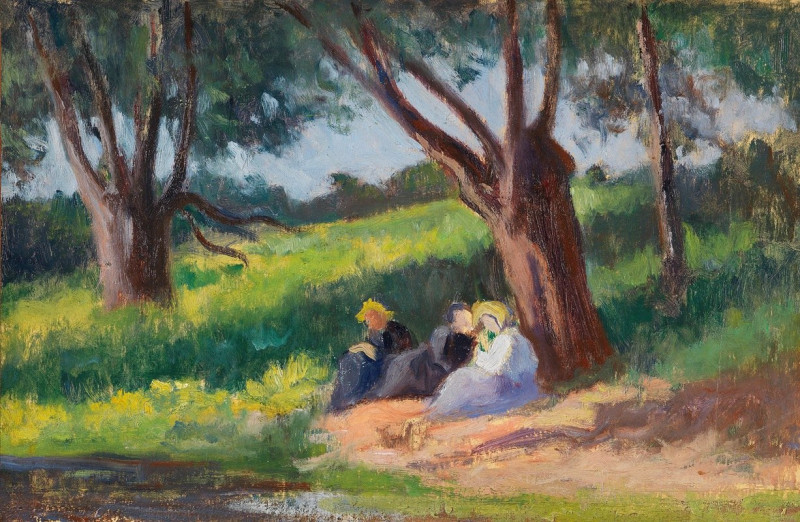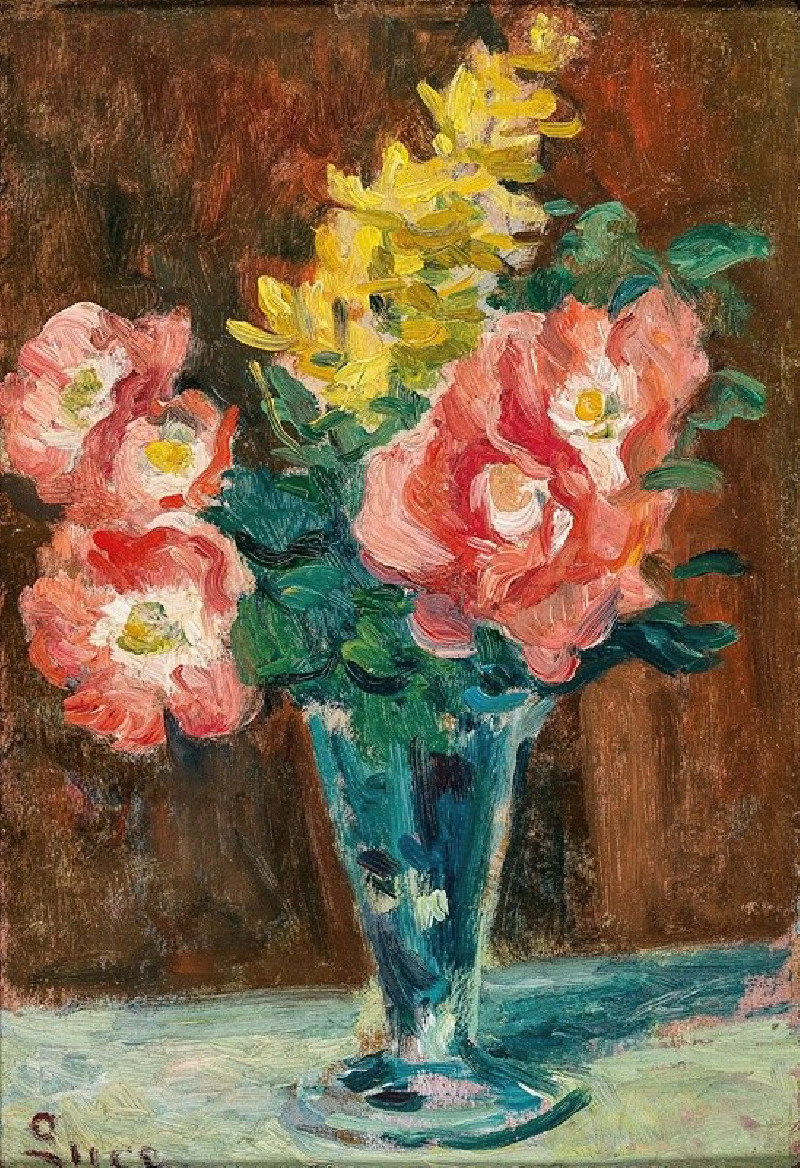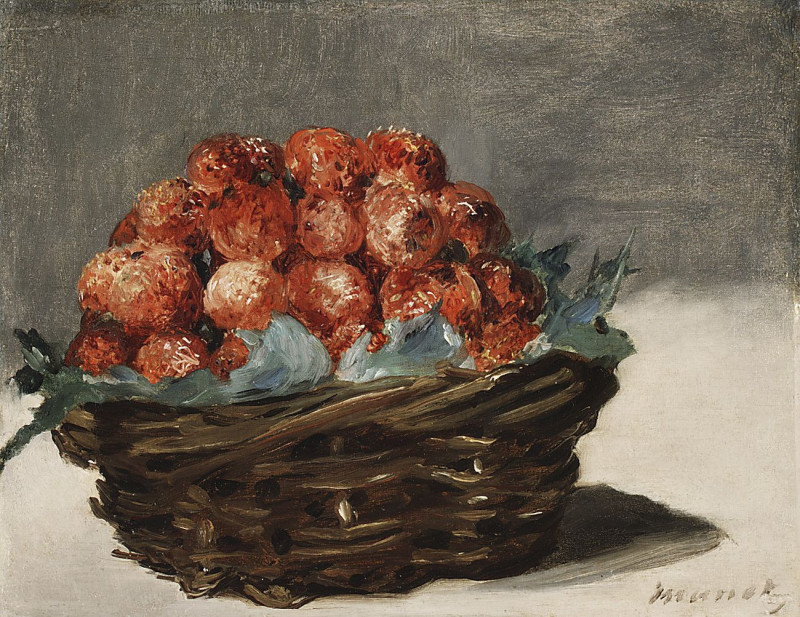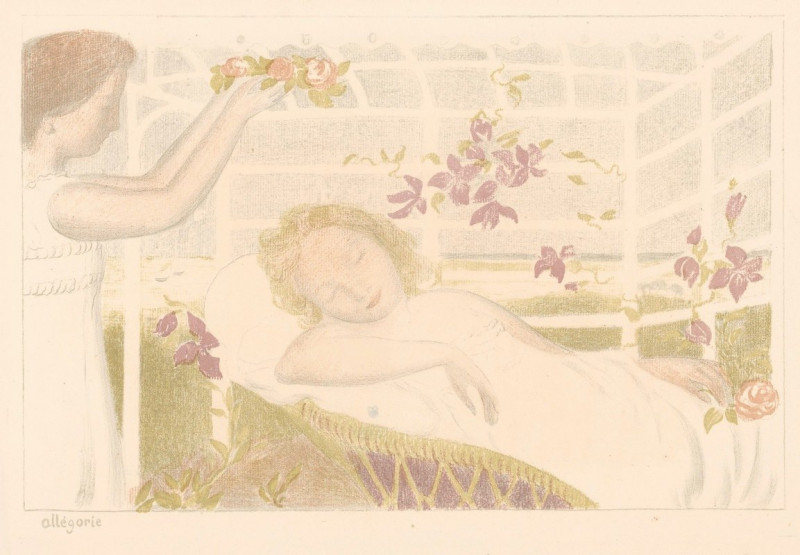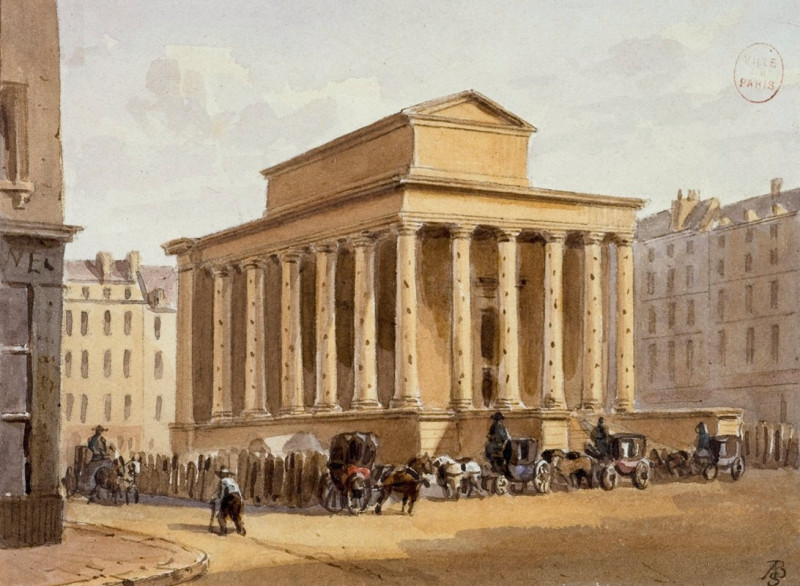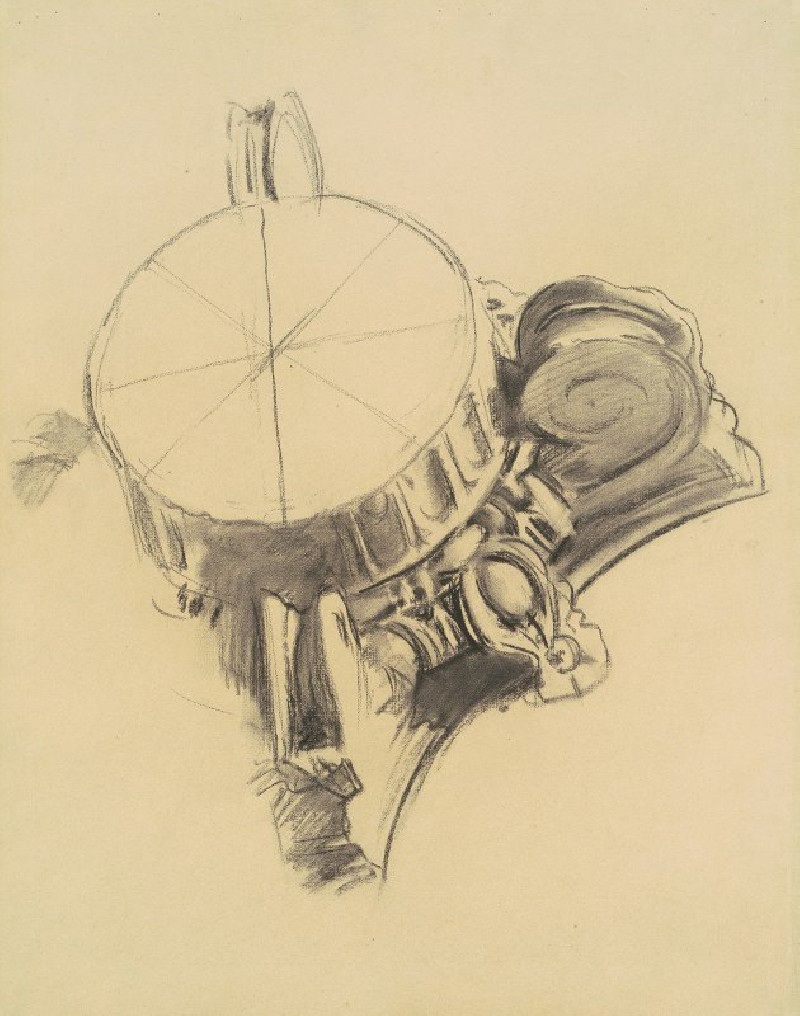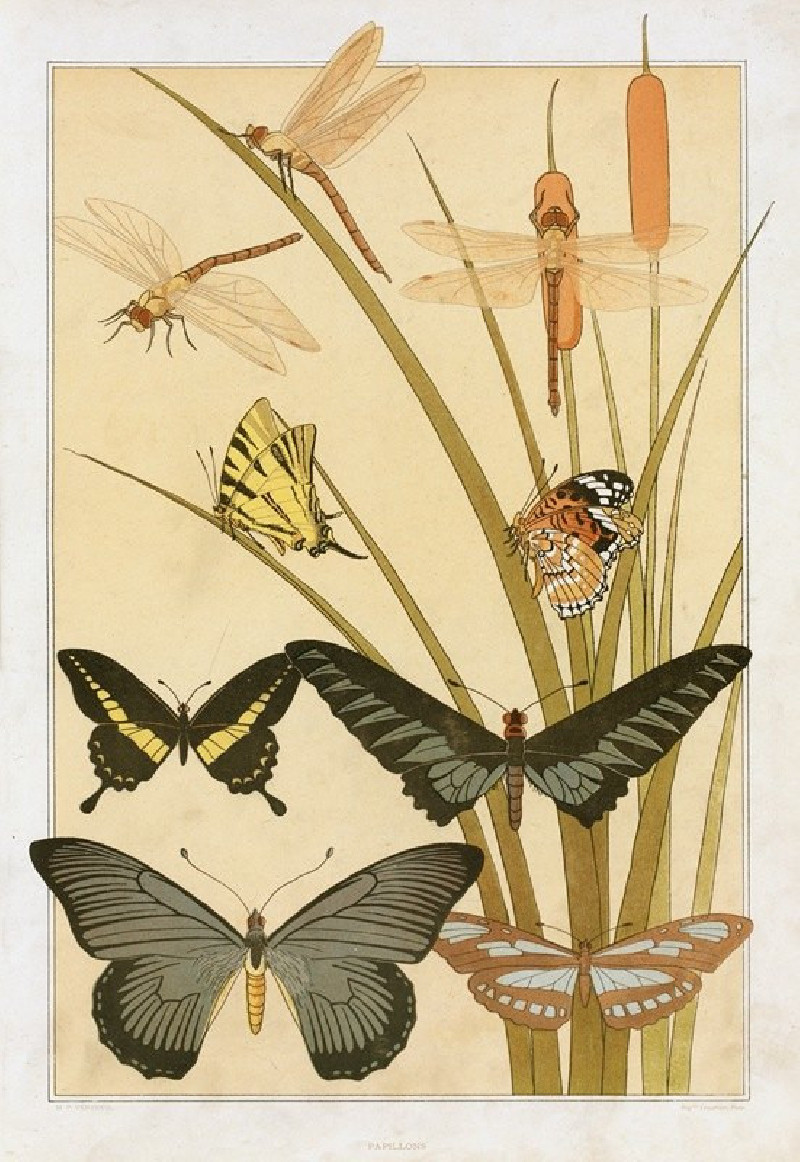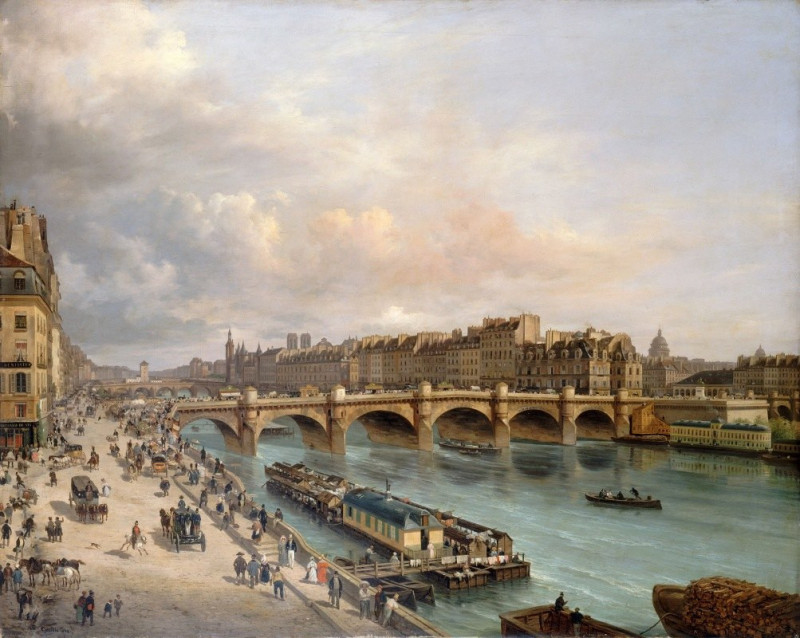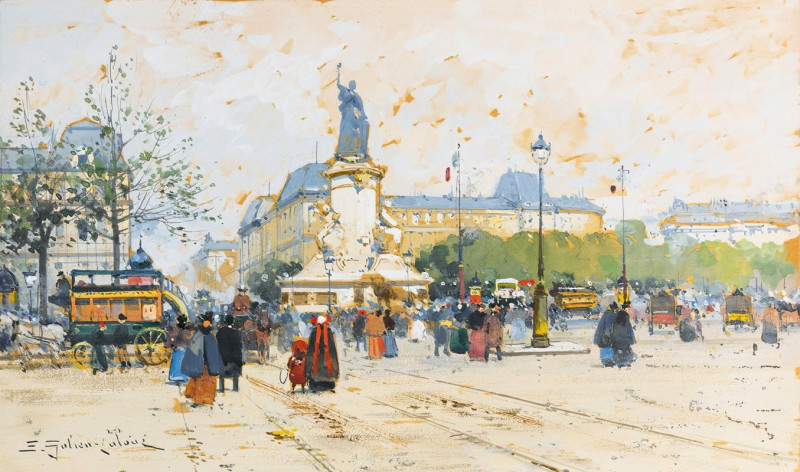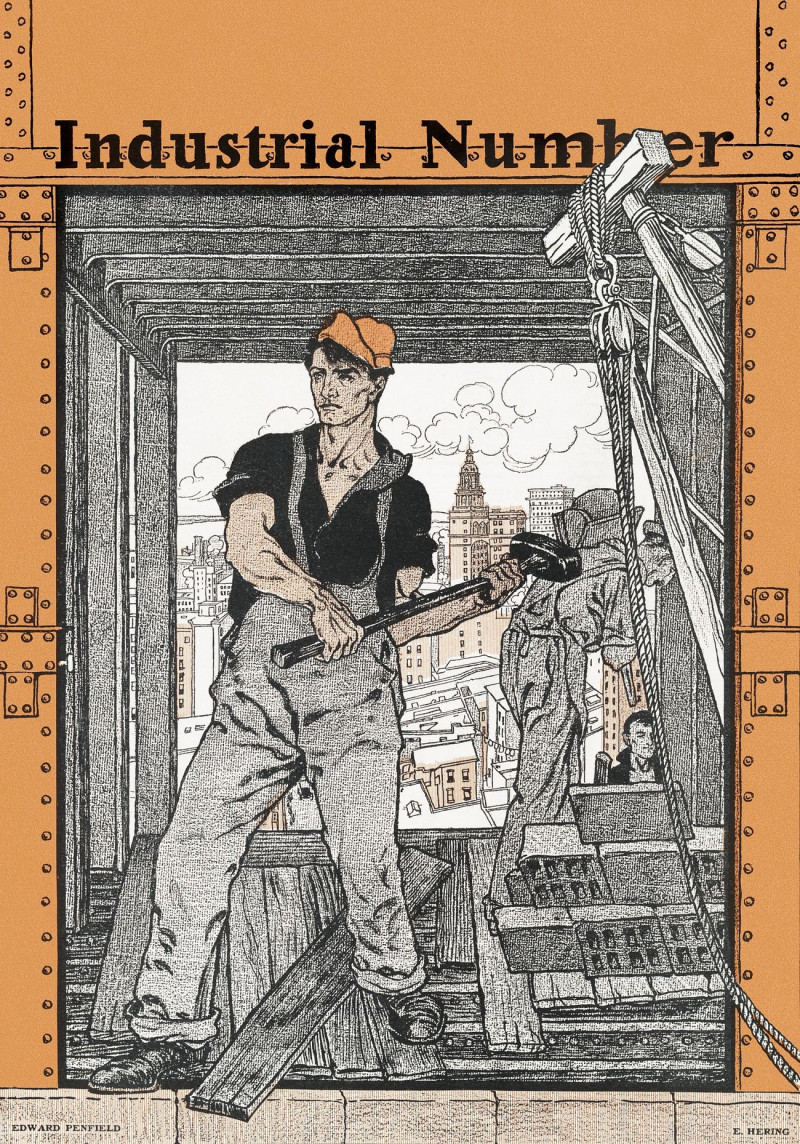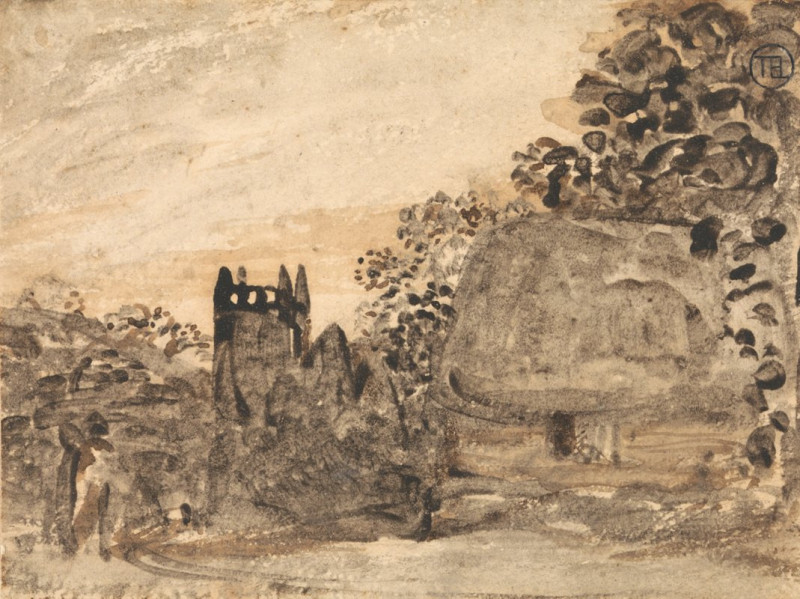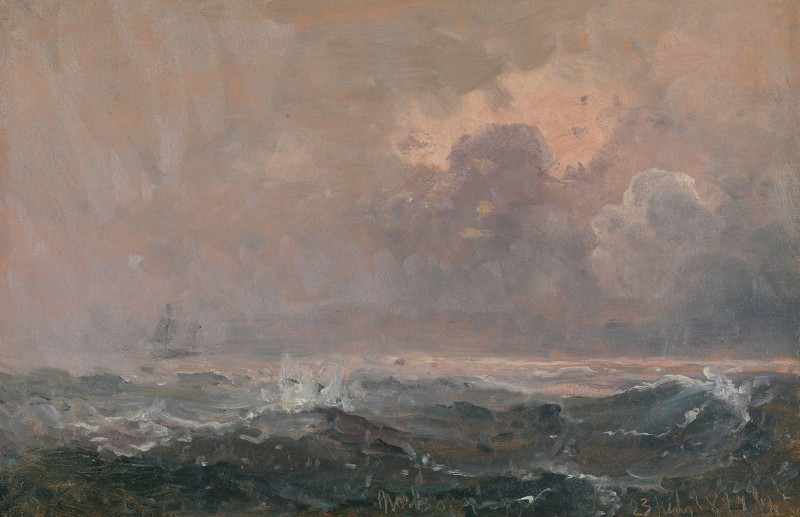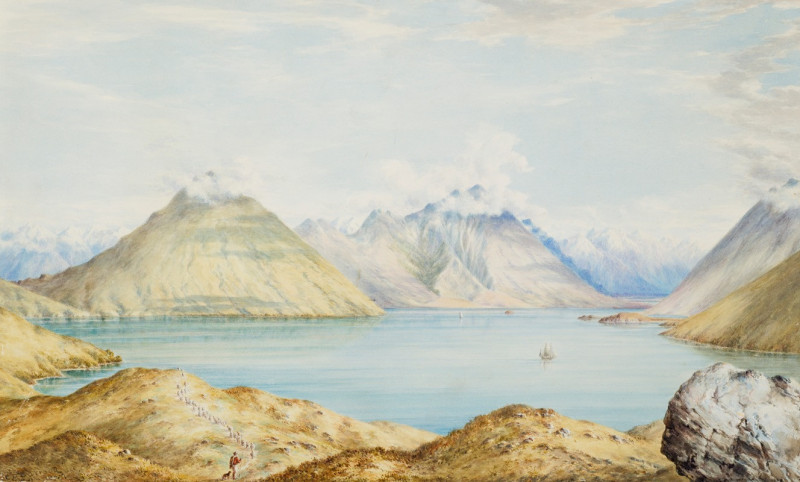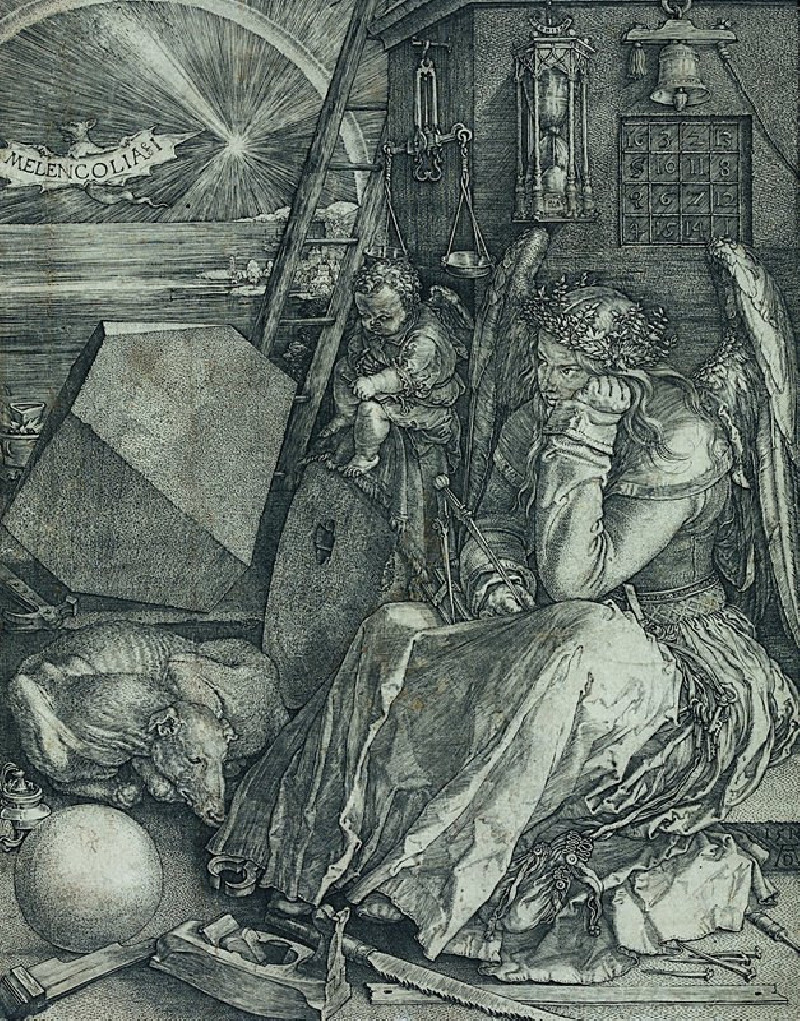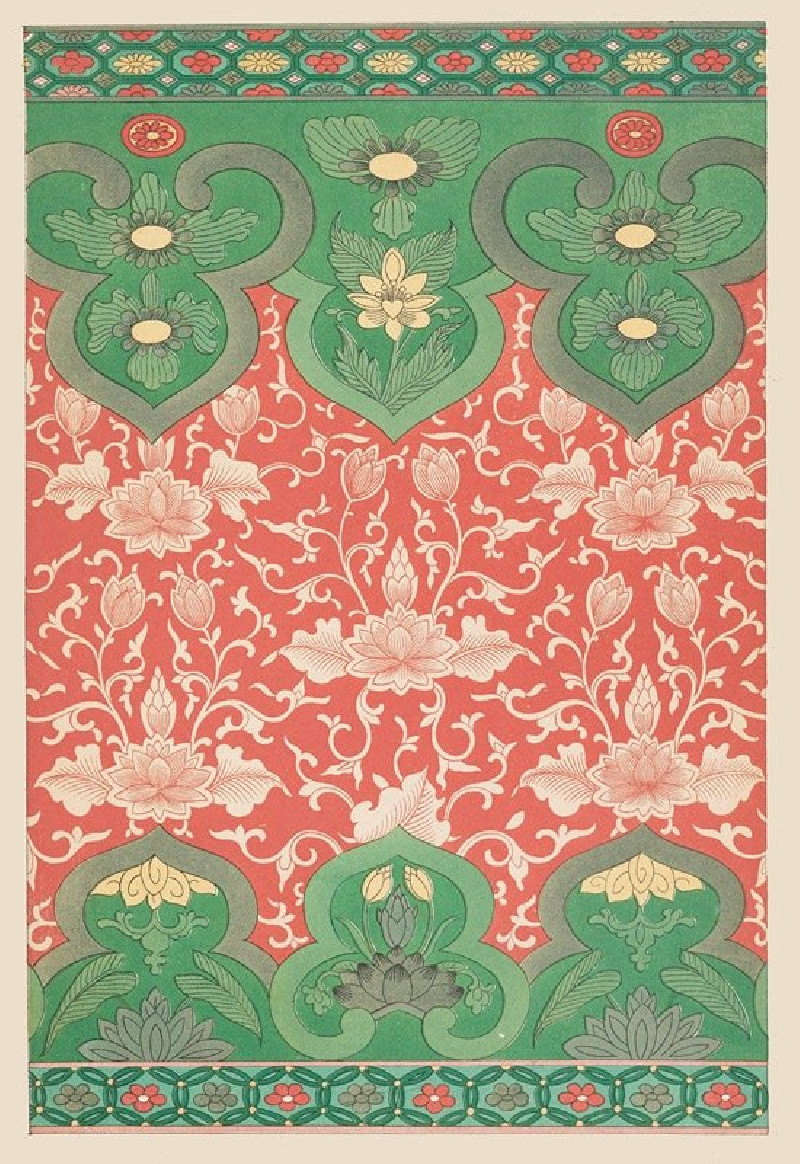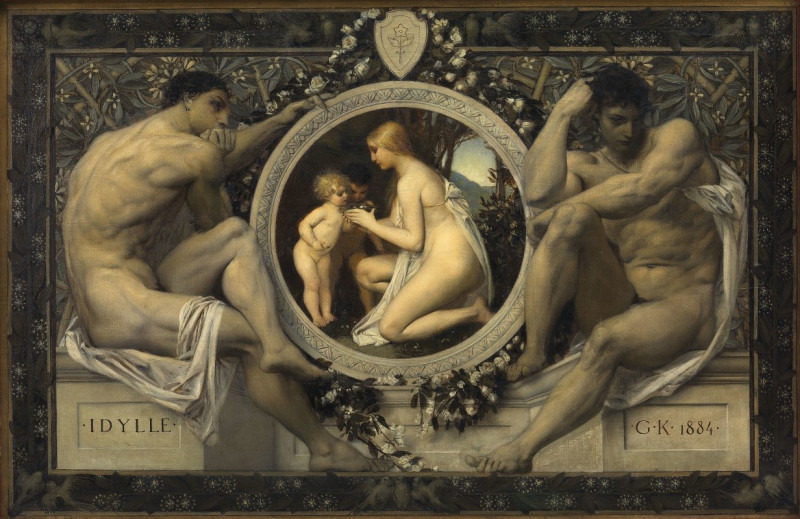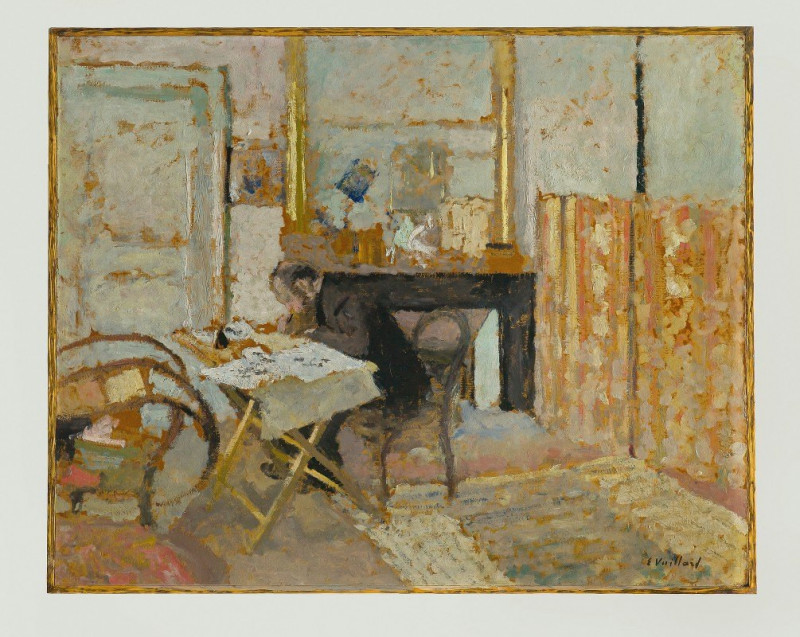Nu Assis (1884)
Technique: Giclée quality print
Recommended by our customers
More about this artwork
Titled "Nu Assis" (Seated Nude), this compelling work by Maximilien Luce, created in 1884, showcases the artist's unique style and sensibility towards the traditional subject of the nude. The painting features a woman seated in a contemplative pose, her body partially draped in a white fabric, which contrasts vividly with the warmth of her skin tones. Her face is turned away from the viewer, creating an air of introspection and solitude.Luce's technique in this piece is characterized by vibrant, expressive brush strokes, which not only sculpt the figure's form but also enliven the space around her with dynamic color variations. The backdrop is composed of swirling blues and greens, suggesting perhaps the soft fold of a curtain or perhaps abstract forms, framing the subject and enhancing the emotional depth of the scene.This painting is not only a celebration of human form but also of emotional expression, capturing a quiet moment of personal reflection.
Delivery
Returns
Maximilien Luce was a prolific French Neo-impressionist artist, known for his paintings, illustrations, engravings, and graphic art, and also for his anarchist activism. Starting as an engraver, he then concentrated on painting, first as an Impressionist, then as a Pointillist, and finally returning to Impressionism.

